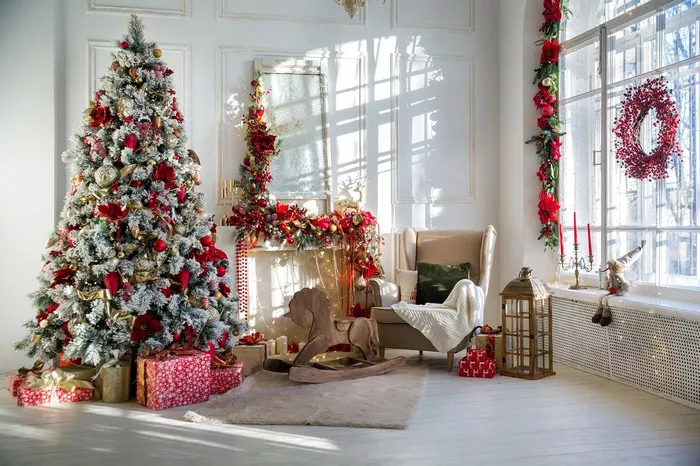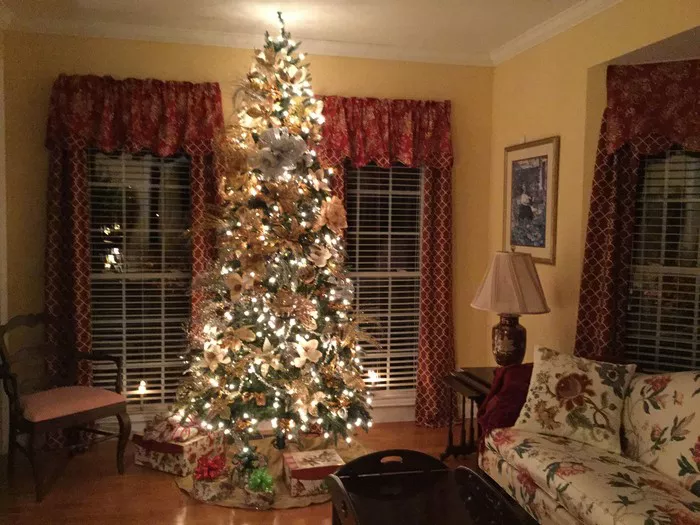The tradition of decorating Christmas trees with ornaments is a cherished custom in many parts of the world, evoking a sense of joy and festivity during the holiday season. But where did this tradition originate, and how did it evolve into the elaborate displays we see today?
Early Beginnings
The use of evergreen trees, particularly fir and pine, as symbols of life and fertility dates back to ancient times, long before the celebration of Christmas. In regions such as ancient Egypt, Rome, and Celtic Europe, evergreens were revered for their ability to stay green through the harsh winter months, symbolizing resilience and hope for the coming spring.
Medieval Roots
The custom of bringing evergreen trees indoors and decorating them gained popularity in medieval Europe, especially in Germany. Historical records from the 15th century mention evergreen trees being adorned with apples, nuts, and other fruits during the winter season. These decorated trees were often part of “mystery plays” or religious dramas performed during the Christmas season, where they symbolized the Tree of Paradise.
Martin Luther and Candles
One notable figure in the history of Christmas tree ornaments is Martin Luther, the 16th-century Protestant reformer. Legend has it that Luther was inspired by the beauty of stars twinkling through the branches of an evergreen tree one winter night. To recreate this scene for his family, Luther is said to have brought a small evergreen tree indoors and decorated it with candles, which symbolized the stars. This tradition of using candles on Christmas trees continued for centuries, although it posed significant fire hazards.
The Rise of Glass Ornaments
The 19th century witnessed a transformative shift in the history of Christmas tree decorations with the mass production of glass ornaments. In the 1830s, Hans Greiner, a German glassblower, began crafting delicate glass ornaments shaped like fruits, nuts, and animals. These ornaments were initially expensive and considered luxury items, but with advances in manufacturing technology, glass ornaments became more affordable and accessible to the general public.
The Influence of Queen Victoria
The popularity of Christmas tree decorations soared after Queen Victoria and Prince Albert, who was of German descent, were depicted in a popular London newspaper with their children around a lavishly decorated Christmas tree in 1848. The image captured the public’s imagination and spurred interest in the tradition of decorating Christmas trees across the English-speaking world.
Tinsel and Other Innovations
During the Victorian era, tinsel—originally made from real silver—became a sought-after decoration for Christmas trees. Its shimmering appearance added a magical touch to tree displays. Other popular ornaments during this period included handmade decorations such as paper chains, cornucopias filled with sweets, and wax ornaments.
Popularity in America
The tradition of decorating Christmas trees gained widespread popularity in the United States during the 19th century, particularly among German immigrants. As more Americans embraced the custom, the demand for Christmas tree ornaments grew, leading to the establishment of specialized businesses catering to the production of ornaments and decorations.
Modern Trends
Today, Christmas tree ornaments encompass a wide range of styles and materials, reflecting diverse cultural influences and artistic trends. From traditional glass baubles to whimsical figurines, ornaments come in various shapes, sizes, and themes. Many families also incorporate personal and sentimental ornaments passed down through generations or collected during travels.
Global Variations
While the Christmas tree ornament tradition is predominantly associated with Western cultures, variations of this custom exist around the world. In Eastern Europe, for example, Christmas trees are often adorned with handmade ornaments crafted from straw, wood, or fabric. In Scandinavian countries, minimalist designs featuring natural materials like wood, felt, and straw are popular.
Personal Touch
One of the enduring charms of Christmas tree decorations is the personal touch they bring to holiday festivities. Families often gather to decorate their trees, reminiscing about the stories behind each ornament. Handmade ornaments, whether crafted by children or skilled artisans, add warmth and authenticity to the holiday season.
Conclusion
The evolution of Christmas tree ornaments is a testament to the enduring appeal of this festive tradition. From its humble origins in ancient rituals to the elaborate displays of modern times, the decorating of Christmas trees with ornaments continues to evoke a sense of wonder and nostalgia. As we celebrate the holiday season each year, the ornaments adorning our trees serve as tangible reminders of the joy, hope, and cherished memories that define this special time of year.
Related Topics:


























